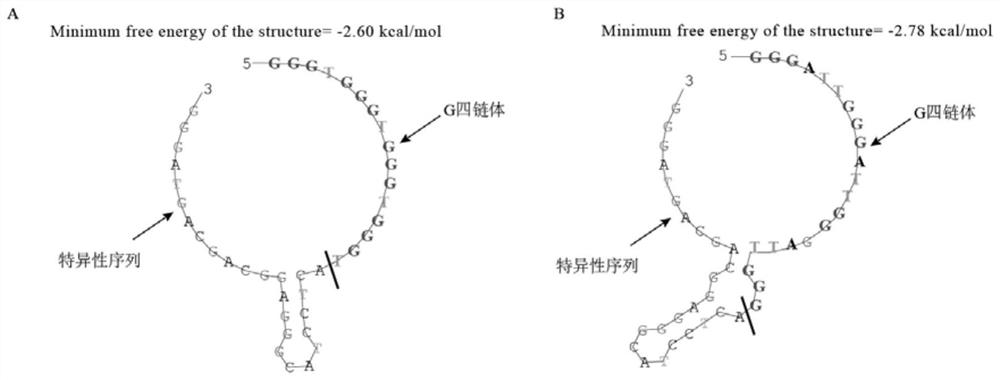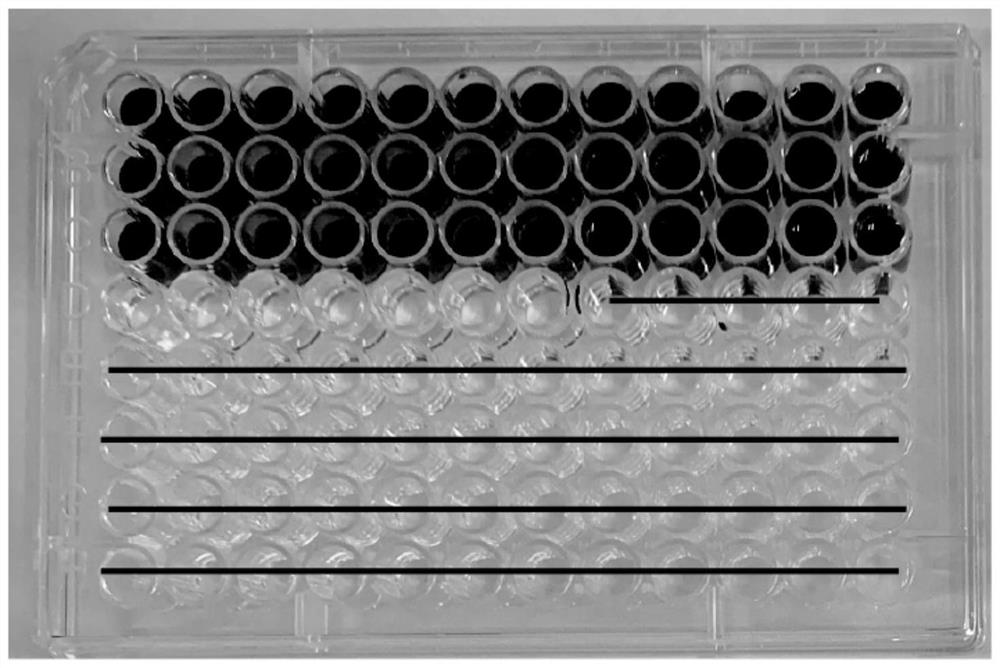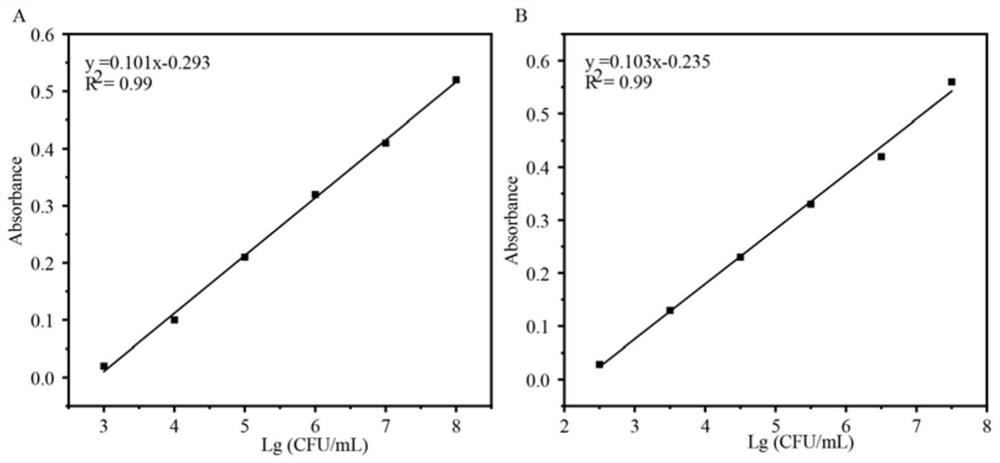Probe, method and kit used for absolute quantification of bacterial microorganisms, and application of kit
A technology of microorganisms and detection kits, applied in biochemical equipment and methods, measurement/inspection of microorganisms, DNA/RNA fragments, etc., which can solve the problems of unsuitable and timely detection, insufficient detection accuracy, and the inability to realize the detection of total bacterial microorganisms And other issues
- Summary
- Abstract
- Description
- Claims
- Application Information
AI Technical Summary
Problems solved by technology
Method used
Image
Examples
Embodiment 1
[0061] Example 1: Bacterial microorganism quantitative probe combination reagent
[0062] Probe combination reagent; contains independently packaged signal probe reagent and quenching probe reagent; wherein, the signal probe sequence is shown in SEQ ID NO.1 or SEQ ID NO.3, and the quenching probe sequence is SEQ ID NO.2 (corresponding to the signal probe SEQ ID NO.1) or SEQ ID NO.4 (corresponding to the signal probe SEQ ID NO.3).
[0063] Signal probe reagents and quench probe reagents, in dry powder or liquid form; in dry powder form, they can be diluted to an appropriate concentration before the experiment, for example, use sterile water or buffer to dilute to a concentration of 20 μM; in liquid form , the concentration can be 20-200μM, the reagent can be diluted before use, or used directly.
Embodiment 2
[0064] Example 2: Bacterial microorganism quantitative kit and its use
[0065] Bacterial microorganism quantification kit, containing independently packaged signal probe reagent and quenching probe reagent; wherein, the signal probe sequence is shown in SEQ ID NO.1 or SEQ ID NO.3, and the quenching probe sequence is shown in SEQ ID NO. It is shown in SEQ ID NO.2 (corresponding to signal probe SEQ ID NO.1) or SEQ ID NO.4 (corresponding to signal probe SEQ ID NO.3).
[0066] When the kit is used, it can be mixed with heme, buffer, 2,2-azino-bis-(3-ethylbenzodihydrothiazoline-6-sulfonic acid) diammonium salt (ABTS), H 2 O 2 With the use of.
[0067] The usage method is:
[0068] (1) Solution configuration. Prepare 100nM heme solution (reagent 1); prepare Tris-HCL with a final concentration of 50mM, KCl with a final concentration of 50mM, and a final pH of 7.9 (reagent 2); 7mM of 2,2-azino-bis-( 3-ethylbenzodihydrothiazoline-6-sulfonic acid) diammonium salt (ABTS) (reagent 3...
Embodiment 3
[0075] Example 3: Bacterial microorganism quantitative kit
[0076] Bacterial microorganism quantification kit, containing independently packaged signal probe reagent and quenching probe reagent; wherein, the signal probe sequence is shown in SEQ ID NO.1 or SEQ ID NO.3, and the quenching probe sequence is shown in SEQ ID NO. It is shown in SEQ ID NO.2 (corresponding to signal probe SEQ ID NO.1) or SEQ ID NO.4 (corresponding to signal probe SEQ ID NO.3).
[0077] The kit also contains 100 nM heme solution (reagent 1), Tris-HCL buffer, 7 mM 2,2-azino-bis-(3-ethylbenzodihydrothiazoline-6-sulfonic acid) ) diammonium salt (ABTS), 7mM H 2 O 2 solution.
PUM
 Login to View More
Login to View More Abstract
Description
Claims
Application Information
 Login to View More
Login to View More - R&D
- Intellectual Property
- Life Sciences
- Materials
- Tech Scout
- Unparalleled Data Quality
- Higher Quality Content
- 60% Fewer Hallucinations
Browse by: Latest US Patents, China's latest patents, Technical Efficacy Thesaurus, Application Domain, Technology Topic, Popular Technical Reports.
© 2025 PatSnap. All rights reserved.Legal|Privacy policy|Modern Slavery Act Transparency Statement|Sitemap|About US| Contact US: help@patsnap.com



